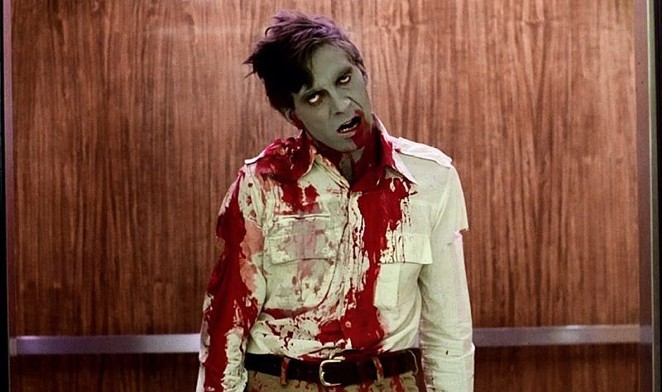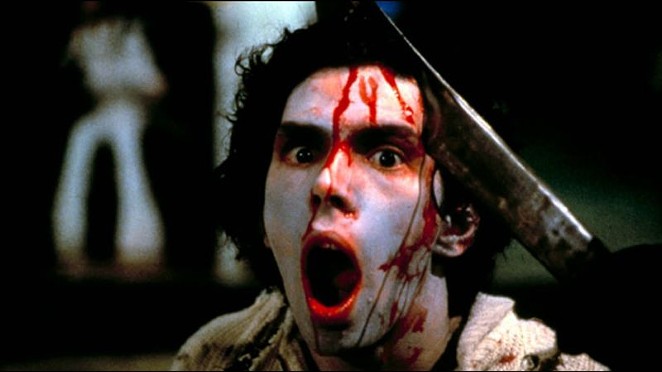WHETHER it’s The Godfather or the first Star Wars or Titanic or anything in between, no matter our generation, we've all got that one movie that really hit us hard the first time we saw it and has stayed with us ever since.
For Jim Reed —longtime curator and founder of the local Psychotronic Film Series — that movie is unquestionably George A. Romero’s intensely dark 1978 classic, Dawn of the Dead.
“It had a profound impact on my life. This is the movie that got me excited about films and about filmmaking,” Reed recalls of the film, now marking its 40th anniversary.
“It jump-started a love of fringe and provocative motion pictures, and opened my eyes to the notion that something as seemingly one-dimensional as a zombie movie could actually contain hidden subtexts and meanings, and operate on multiple artistic levels,” he says.
This weekend’s SCAD Cinema Circle screening of Romero’s Dawn of the Dead — not to be confused with an inferior 2004 remake — kicks off a series of different “zombie apocalypse”-themed films at Trustees over the next few weeks.
The always engaging and entertaining Reed, who is a former SCAD student himself, along with SCAD sound design prof David Stone, will host and moderate a Q&A session at the screening.
Reed says the key to understanding and appreciating Dawn of the Dead is not to look at it as strictly a horror film.
“It’s ostensibly a horror movie, but that’s sort of a Trojan horse,” he says. “It’s actually a savage and brutal piece of social criticism. It skewers and shames the ugliness of American consumer culture and our history of racism and classism.”
And, oddly enough, it’s also a comedy of sorts.
“There’s a lot of humor in it as well,” Reed says. “That’s another thing about Romero: He’s sly and sardonic. There’s a real element of a circus sideshow in the film.”
Dawn of the Dead was also groundbreaking in other ways.
“When this film came out, even though there is no nudity and almost no foul language, it was originally given an X rating.This might be the only X-rated movie with no sex of any kind whatsoever,” Reed laughs.
“At the time it was considered so disturbing that they wanted to discourage anyone under 21 to even set foot in the theatre.”
However, a young Jim Reed was a notable exception — he first saw it when he was about ten years old.
“My dad took me. I think they let me in because we lived in a little town in Tennessee and they just didn’t understand the ratings guidelines,” Reed laughs.
Reed says the experience was so powerful, it stays with him to this day.
“It was a midnight showing. I went back the next night to see it two nights in a row, I was so flabbergasted. You have to remember this is way before VHS or HBO. So if you wanted to see a movie more than once, the only option was to go back to the movie theatre,” he says.
“Just in the first 10 minutes I was stunned. Romero just hits the audience over the head,” he recalls.
“This kind of violence was shocking then, but it’s now regularly seen in primetime on basic cable. It’s quite graphic, but less graphic than what you see on HBO today. Romero changed the course of cinema the way Lenny Bruce changed the course of standup comedy.”
While an X rating doesn’t have the force of law, it would have been the commercial kiss of death — “newspapers and magazines would refuse to accept advertising for an X-rated film,” Reed explains.
So Romero decided to release it unrated, a novel move at the time.
“That was a landmark decision,” Reed says. “Up to that point, only foreign specialty films had been released unrated, because it was just assumed that their sensibilities didn’t translate to the American market.”
Reed stresses that this isn’t one of those movies you can just pull up on Netflix or Amazon.
“For a lot of reasons, this cut of this film is extremely difficult to find. You’re only going to see it in this form at this screening, as it was meant to be seen by its creators, in a beautiful, darkened theater.”
Referring to his own trademark film series, he says Dawn of the Dead “is easily the most ‘psychotronic’ movie to ever appear in this series, and it’s a pleasure and an honor to introduce the film and then moderate a discussion on its legacy and merits as a landmark American film.
“I daresay there would be no Psychotronic Film Society of Savannah were it not for Romero’s Dawn of the Dead,” he concludes.



